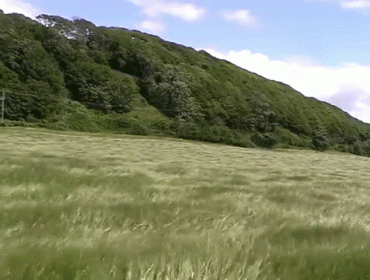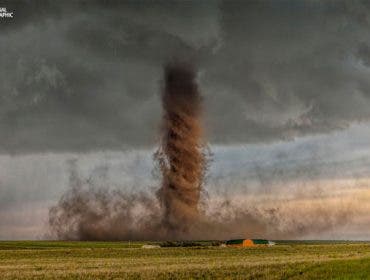In my recent search for an update to my Nikon D300, I came across the Canon 7D Mark II which has many new unique extraordinary features – several of which – had raised my eyebrow in interest. As I’ve mentioned before, I have gone back and forth between Canon and Nikon over the years with a few other makers making it into my camera bag as well, so I have not been opposed to switching back to Canon if the quality is there. I was able to get my hands on a Canon 7D Mark II and gave it trial run of my own to see if it was all that Canon cracked it up to being.

The Canon 7D Mark II, which was released some time in September of 2014 features a 20.2 megapixel DX-format image sensor – a 2.2 MP jump up from its predecessor, the Canon 7D. It boasts of a durability rate of 200,000 shutter cycles, a 50,000 cycle jump from its predecessor. You can find the Canon 7D Mark II at Adorama for $1,399.00.
Key Features:
- 20.2 Megapixel CMOS (APS-C) Sensor
- Native ISO 100 to 16000 with expansion to 51200
- 200,000 Shutter Cycle Rating
- Dual DIGIC 6 Image Processors for High-Speed Continuous Shooting
- 65-point All Cross-Type AF System
- iSA Scene Detection System
- Dual Pixel CMOS AF
- Full HD Video
- Intelligent Viewfinder II
- 3.0-inch Clear View II LCD Monitor
- Improved Custom Controls
- Built-in GPS Receiver
There are numerous other features on this camera – some useful, others not so much – but these are the key features that photographers typically look more closely at when making a camera purchase.
Body Design, Ergonomics & Handling
Like most Canon and Nikon DSLRs, I am not surprised that the Canon 7D Mark II is a very solid and rugged camera. There is something about the weight of a piece of gear that makes you feel like you have a good, professional product in your hand rather than a cheap, light plastic product that would probably break with a fall. This bad boy – without a lens – comes in at a weight of 28.92 oz (around 1.8 pounds) which is exactly the weight of my current Nikon D300 camera body. The Canon 7D Mark II camera body measures approximately 5.85 x 4.43 x 3.08″ in width, height and depth.

This camera has a very comfortable grip, and considering its size, it’s not uncomfortable to turn the camera and shoot portrait-oriented images. It is certainly a plus that this camera has weatherproofing, which makes it versatile in use.

Buttons, Functions and Controls, Oh My!
As a current Nikon shooter (I say “current” as I have owned many makes of cameras including Canon in the past), it took a bit of getting used to the button and function locations on the camera to change controls – much like a PC user using a Mac for the first time (but I’ve learned and use both PCs and Macs). However, after shooting with the camera for a few days, it became a little less uncomfortable. I personally like the pro-line of Nikon’s button and function locations a bit better. They are just more comfortable and make more sense to me in placement.
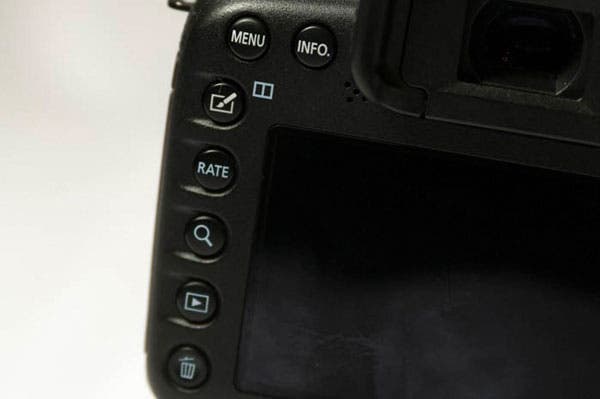
As for buttons and controls, I know many users of this camera have complained about the location and function of some of the buttons, some points of which I agree and had trouble too at first. I feel that Canon wasted a few buttons on this model – functions that should be in-camera and not set as a default button. For instance, the location of the Creative Photo/Comparative Playback button on the top back left of the camera – Creative Photo should be an in-camera function and Comparative Playback could be combined with the regular Playback button. The Playback button could be moved to that spot because it feels too low on the back for a commonly used button. I would do all of that outside of my camera on a big screen anyway. The Rate button is useless. Why would anyone rate their images in-camera based on viewing them on a tiny LCD screen? And who would spend time in the field doing this when they could be shooting? I personally wait and load my images into Adobe Lightroom on my computer or laptop (a much bigger screen) and then rate and discard from there.
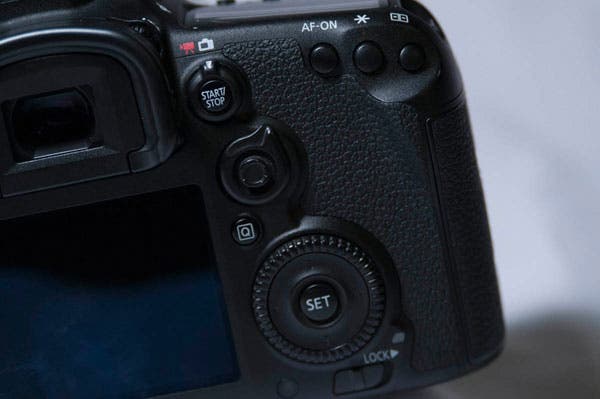
As for the back right side of the camera… one of the hardest things for me to get used to was the distance between the shutter and aperture controls. The shutter is controlled by the wheel on the top of the camera whereas the aperture is controlled by the big wheel on the back. I’m used to these being within a literal pinch of each other. Video and Live View mode has its own dedicated Start/Stop button.

I was happy to find a dial lock on the Mode Dial as I cannot tell you the number of times I’ve accidentally nudged this dial into another mode. As you could imagine, this could become an issue – especially on some of the cameras where the Release Mode Dial is located just below it. Even here, in turning the camera on and off – lack of a lock would move the dial. Also on the Mode Dial are the option for three custom mode settings.

On the top of the camera are the conveniently located handy buttons for setting things such as white balance, ISO, autofocus selection and metering mode selection.

Menus
I’ve heard a lot of confusion over having to go through all of the pages of each the menu with the joystick to get to the next menu. I was part of that club the first time I took the camera out for a spin, but quickly realized the “Q” button allows you to jump to the next menu quickly and easily. Why it takes a joystick, a button and a wheel to get what you want out of the menu section is beyond me, however, once you start using the camera more and more, you get used to it.

Display
A big plus for me was the 3 inch LCD display on the back of the camera which is commonly used for menu selections, picture review and Live View mode. It’s also one of the brighter displays I’ve worked with thus far as I spent a great deal of time outdoors with this camera in direct sunlight and never had an issue seeing what was on the LCD screen. I never even pulled out my Hoodman HoodLoupe Optical Viewfinder which I typically use to see the LCD screen in direct sunlight.
Autofocus Area & Performance
This camera has to have one of the highest number of focus points that I have seen thus far. It has 65 cross-type focus points that focus on both vertical and horizontal detail quickly and with great precision and accuracy. I didn’t have the issue of the camera hunting for focus, even in lower light settings, so long as there was some contrast in the scene. The Canon 7D Mark II also uses iTR (Intelligent Tracking & Recognition) to follow subjects across a frame during focusing using color and face information. I found this useful when shooting video as it kept me focused on the movement I was initially focused on, even if something blew by on two wheels between the subject and the camera.

I took my own camera along with the Canon 7D Mark II up to Storm King and while my own camera spent more time searching for focus on the scene below, the Canon instantly grabbed onto the leaf and shot was captured before the wind blew the leaf away.

Speed and Continuous Shooting
As I was shooting with this camera, I found it to have a lightning fast focus and capture rate. I tend to have a slightly shaky hand when shooting depending on the weight of the lens I am using and using a tripod isn’t always an option for me, so having a fast focus and capture rate for me is extremely important. In addition, the Canon 7D Mark II can shoot a burst of images up to 10fps with full autofocus and autoexposure, making this the perfect candidate for capturing sports or any type of action, including wildlife. I was able to capture the image below of these children playing at Storm King through a quiet and fast continuous shutter.

Flicker Detection Feature
A new feature that was released with this camera was a Flicker Detection system that helps shutter release timing when faced with flickering light issues such as fluorescent lights or candlelights where one image is bright and the next is underexposed – each with different color temperatures mixed in. I didn’t get a chance to test out this feature but as photographers we deal in light – any kind of light – and it’s important to be armed with weapons for dealing with light issues. This is a good tool to have in the tool box. The option for enabling this can be found in the Shooting menu, fourth page over in the menu.
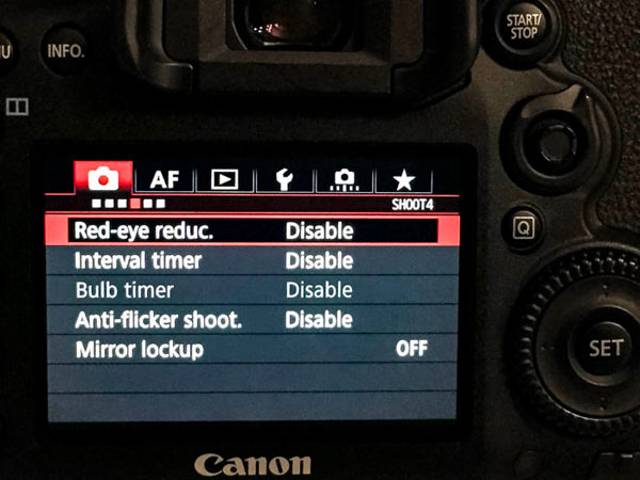
Live View
The Live View option is a great option to have when shooting from below or above, where you may not have the accessibility of looking through the viewfinder. This feature is extremely useful for those who shoot video, rather than looking through a viewfinder, however, due to a little bit of lag time between shutter and actual capture when using Live View, I prefer to use my viewfinder for still shots.
Some things to consider while using the Live View mode is that Flicker Detection is not available for concurrent use since the mirror is locked up. iTR is also not available during Live View mode use due to the raised mirror darkening the iTR sensor in the viewfinder, however, Live View has its own technology that works as a good substitute.
Connectivity
Multiple connections can be plugged into this camera such as a microphone, headphones, USB 3.0, HDMI terminal, PC port and N3 type port.

Image Quality
Having spent the entire day up at Storm King using this camera rewarded me with some beautiful images. Color was more than I could ask for, focus speed granted me many shots I typically might have missed with my old camera and the resolution of each image as well as the sharpness and detail were superb.

I was amazed by the detail captured by this camera compared to other cameras I’ve used in the past. You can see the veins of each leaf and each blade of grass is clearly defined…

ISO
The native ISO of this camera is from 100 to 16000 with expansion to 51200, which is another high mark that I have yet to see surpassed by another model.
Video
While I’m more of a still shooter and not much for shooting video, the Canon 7D Mark II is capable of recording full HD 1080p video at up to 60 fps. The video and sound quality is pretty decent – combined with a good lens such as a Canon 85mm 1.8 or a Zeiss of any focal length, the end result could be pretty stellar.
GPS
Another interesting feature I found on this model was the built-in GPS receiver, allowing you to geotag your images all the way down to the correct day and time – no matter the time zone.

Storage
An interesting thing to note about the Canon 7D Mark II is that it has a Compact Flash and an SD card slot. Many users, like me, who flip flop between cameras find that they tend to either acquire a bunch of one card and/or the other due to different camera models requiring different card type. You can either use all those acquired cards here or rest assured you have a card that works. Kidding aside, it’s a great feature in general to have dual card slots for double storage or for designated storage (ie. video to one card and stills to the other).

What’s in the Box
- Canon EOS 7D Mark II DSLR Camera
- RF-3 Body Cap for Canon EOS Cameras
- Eyecup Eg IFC-150U II USB 3.0
- Interface Cable for EOS 7D Mark II DSLR
- LP-E6N Lithium-Ion Battery Pack (7.2V, 1865mAh)
- LC-E6 Charger for LP-E6 Battery Pack
- Battery Cover
- Wide Camera Strap
- Software CD-ROM
- Limited 1-Year Warranty
Pros and Cons
Pros:
- Versatility
- 10fps Continuous Shooting
- Native ISO 100 to 16000 with expansion to 51200
- Increased to 200,000 Shutter Cycle Rating
- 65-point All Cross-Type AF System
- Quick and Accurate Autofocus
- Full HD Video
- 100% Coverage Viewfinder
- It’s Big, Bright LCD Monitor
- Built-In GPS Recording Capabilities
Cons:
- The waste of the Rate & Picture Style buttons
- Flicker Detection System unavailable in Live View mode
- Intelligent Tracking & Recognition unavailable in Live View mode
Who It’s For
The Canon 7D Mark II has been dubbed the go-to camera for sports and wildlife photography enthusiasts, however, I am neither of those things and found the camera to be quite useful for landscape and portraits as well. It also works extremely well for low-light photography due to its high native and extended ISO range.
Conclusion
While the Canon 7D Mark II is a bit pricier than many APS-C sensor cameras, but it has many practical bells and whistles which have real use to the common photographer, justifying its cost. The camera is durable and versatile, which already gives it a good start, but combine it with lightning fast and precise autofocus, amazing detail capture, a high continuous shooting speed and a large ISO scale, the rest is just icing on the cake. When paired with good glass, this camera is definitely worth every penny.

